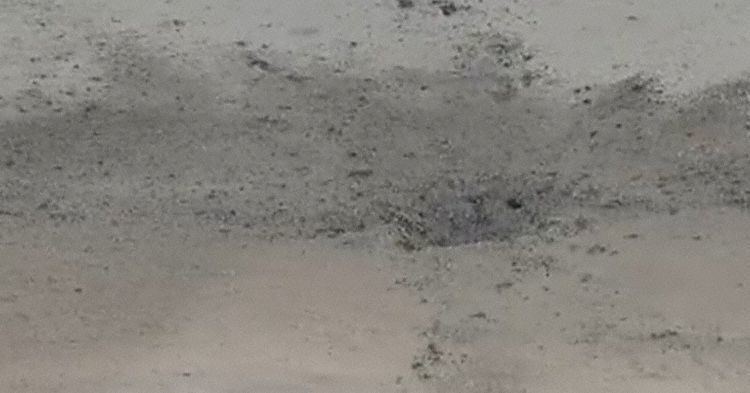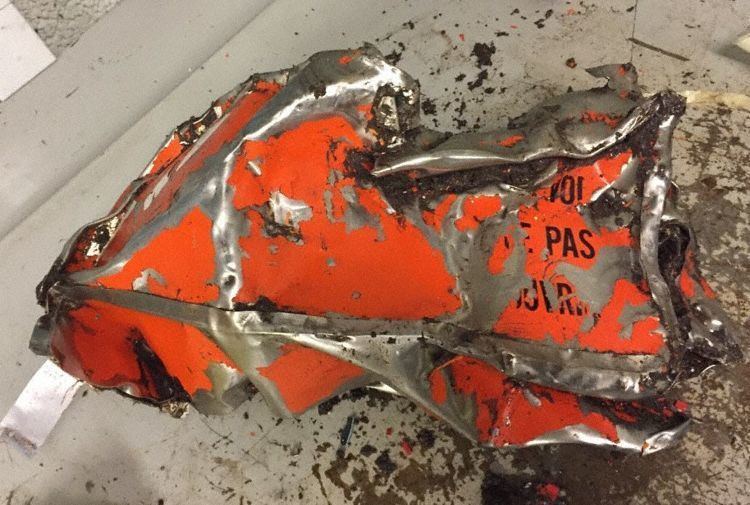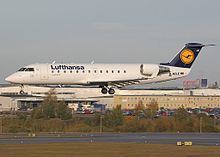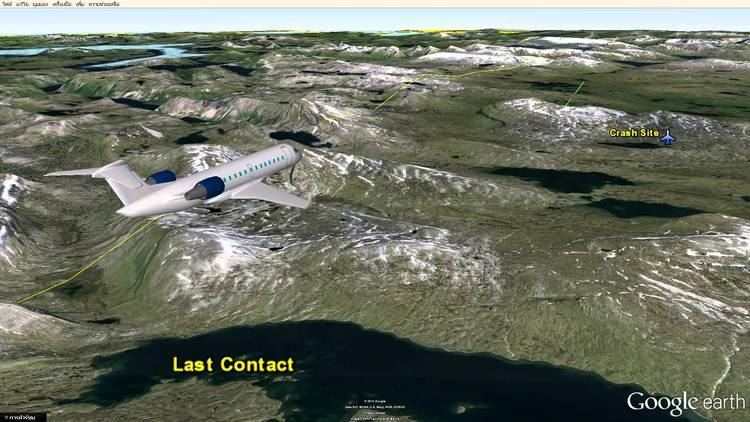Site Near Akkajaure, Sweden Crew 2 Aircraft type Bombardier CRJ200 Registration SE-DUX Location Sweden | Passengers 0 Survivors 0 Date 8 January 2016 Injuries (nonfatal) 0 Fatalities 2 (all) | |
 | ||
Similar Daallo Airlines Flight 159, 2016 Silk Way Airlines A, 2016 Sunbird Aviation c, Singapore Airlines Flight 368, 2016 True Aviation An‑26 cra | ||
West air sweden flight 294 documentary
West Air Sweden Flight 294 was a cargo service that crashed on 8 January 2016, during a flight from Oslo to Tromsø, Norway. Approximately 30 minutes after takeoff, communication with the Canadair CRJ200 was lost following a Mayday call. The aircraft was later found destroyed at the crash site with a large crater, surrounded by blackened snow and charred debris, indicating it had impacted the ground almost vertically.
Contents

Aircraft and operator

The aircraft was built in 1993 and was operated by Lufthansa CityLine as D‑ACLE until the end of 2006. It had a manufacturer's serial number (MSN) of 7010 and had two General Electric CF34-3B1 engines. The aircraft then underwent a cargo conversion re‑designating it as a CRJ200-PF (Package Freighter). The aircraft had been operated by West Air Sweden since 2007 as SE‑DUX. At the time of the crash, it had accumulated more than 38,600 flight‑hours in more than 31,000 cycles.

The 42‑year‑old Spanish captain had around 3,200 flying‑hours, of which 2,016 were on this aircraft type; the 33‑year‑old French first officer had 3,050 flying‑hours, of which 900 were on this aircraft type.
Flight

The aircraft departed Oslo-Gardermoen Airport at 23:11 hours local time for a flight to Tromsø Airport. The aircraft carried 4.5 tonnes (4,500 kg; 9,900 lb) of mail. While in cruise at Flight Level 330 and at approximately 23:31, the aircraft transmitted a MAYDAY call before communication and radar tracking were lost by air traffic control.

Aircraft tracking service Flightradar24 reported that the aircraft lost 6,485 metres (21,275 ft) in altitude over a period of 60 seconds (389 km/h; 242 mph) at 00:18, based upon data transmitted by the aircraft's transponder.
Search
Both Norwegian and Swedish authorities searched for the aircraft, discovering the wreckage at 03:10 in the morning. The crash site was located at an elevation of 1,000 metres (3,300 ft) in a remote area near Lake Akkajaure, approximately 10 kilometres (6.2 mi) from the Norwegian border. The aircraft remains were spread in a circle approximately 50 metres (160 ft) in diameter, which was said to suggest a high‑energy impact.
Investigation
The Swedish Accident Investigation Authority (Swedish: Statens Haverikommission, or SHK) opened an investigation into the crash. On 9 January 2016, the flight data recorder (FDR) was found severely damaged as well as parts of the Cockpit Voice Recorder (CVR). The unit was, however, not intact, and the part containing the memory functions was missing. The following day, the missing parts of the CVR were found, alongside human remains. On 12 January, SHK reported that the distress call from the pilots contained the word "Mayday" repeated, with no further information. On 26 January, Statens Haverikommission reported that they had managed to read both CVR and FDR, and were analysing and validating the recordings.
On 19 March, in their interim report, SHK revealed:
After 17 seconds from the start of the event, the maximum speed (VMO) of 315 knots was exceeded. The overspeed warning was activated and the vertical acceleration turned to positive values.
Another 16 seconds later, the first officer transmitted a "MAYDAY" message that was confirmed by air traffic control. The indicated airspeed then exceeded 400 knots and the stabilizer trim was reactivated and reduced to 0.3 degrees nose down. The Pilot in Command called "Mach trim" after which engine power was reduced to idle.
During the further event the last valid FDR value shows that the speed continued to increase up to 508 knots while the vertical acceleration values were positive, with maximum values of approximately +3G. FDR data shows that the aircraft's ailerons and spoilerons mainly were deflected to the left during the event.
The final report was published by SHK on 12 December 2016. The inquiry reached the following conclusion:
The accident was caused by insufficient operational prerequisites for the management of a failure in a redundant system.
Contributing factors were:
